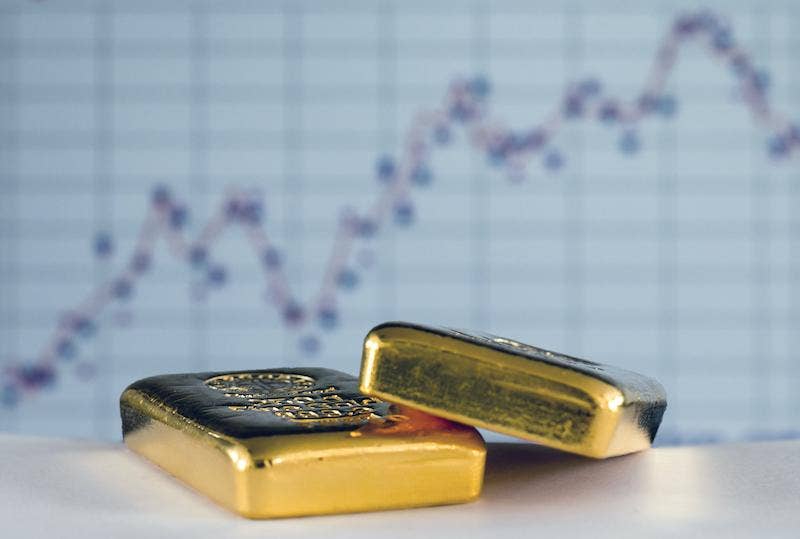As you know, the year 2020 saw some remarkable developments for the precious metals. The price of COMEX gold hit new all-time daily highs in August, and price finished at new quarterly highs in June, September, and December. But 2020 was not just about price alone. We saw some amazing and incredible changes within the pricing system as well.
So before we put 2020 in the rearview mirror, I thought it would be fun to summarize some of the final COMEX data in order to give you some perspective on the incredible and paradigm-changing year we just experienced.
And before we get to the data, remember that the entire COMEX/LBMA system nearly crashed in March of last year. The CME Group was forced to make immediate and extreme changes to their COMEX exchange in order to prop up and legitimize the price discovered there. If you need a refresher, here are just a few of our articles from March, April, and May 2020:
- A Crisis in Confidence - Craig Hemke (April 7, 2020)
- The CME Opens Pandora's Box - Craig Hemke (31/03/2020)
- A Crisis of Confidence, Part Two - Craig Hemke (May 19, 2020)
- Bank EFP (Ab)Use Falls Sharply - Craig Hemke (June 16, 2020)
Let's start with that fourth link above, which deals with EFP (Exchange For Physical) abuse. This arcane component of the pricing scheme has been increasingly abused by the bullion banks over the past few years, with over 14,000 metric tonnes of gold being "exchanged for physical" in the two-year period of 2018-2019. From that link:
- In the calendar year 2018, the COMEX posted 2,332,973 gold contracts "exchanged for physical”.
- In calendar year 2019, the COMEX posted another 2,008,571 gold contracts "exchanged for physical".
In calendar year 2020, that number fell to 1,346,111 with 758,266 exchanges posted in just the first quarter alone before the COMEX/LBMA market crisis of late March. Stated another way, total EFP use declined by about 40% versus the previous two years, but the run rate since April 1 indicates a drop closer to 60%! By all accounts, it appears that the bullion bank abuse of this market mechanism has finally come to a screeching halt and counterparty confidence has not returned.
Further evidence of this can be seen in the total open interest (total available contract) numbers. As 2020 began, total open interest for both COMEX and COMEX silver were near all-time highs. On January 1, 2020, total COMEX gold open interest stood at 786,166 contracts on its way up to an all-time high of 799,541 contracts on January 15. After the March debacle, total open interest collapsed all the way down to a low of just 469,893 contracts on June 8. That's a drop of 41%! Though total open interest began to grow back in the summer, it still finished the year at 559,736 contracts for a decline of 30%—and this while price rose 24.8%! From this, it's easy to discern that the overall level of bullion bank shenanigans has fallen sharply, especially since late March.
The same is true in COMEX silver, where open interest began the year at 229,680 contracts. It peaked at an all-time high of 244,705 on February 24 before collapsing to 131,830 contracts on May 4, which was the lowest total open interest since January 7, 2014! It then grew back later in the year to finish at 171,369—a drop of 25.4%. As in gold, this plunge in open interest stands in stark contrast to price, where COMEX silver began the year at $17.92 and finished at $26.52 for a gain of 48%.
In summary, one would have naturally expected total contract issuance and open interest to soar in 2020 as the metals lodged gains of 25% and 48%, respectively. In fact, however, the opposite occurred.
And why would this be? Besides a crisis of counterparty confidence, why would the bullion banks suddenly appear reticent to play the same games from which they've profited handsomely all these years? Could it be the aforementioned CME Group decision in late March to convert the COMEX into a physical delivery platform? Here's one more link from last year:
As stated above, it's clear that the CME Group rushed changes into place in the spring of 2020, and these changes were designed to stabilize and reinforce the legitimacy of the digital derivative pricing scheme utilized at the COMEX and within the LBMA. In doing so, the CME has sparked heretofore unseen levels of delivery demands at COMEX, and the year-end numbers bear this out.
Calendar year 2019 was not much different from any other year in terms of COMEX gold "delivery". Very few contracts "stood for delivery", and when they did, it was usually just a simple exchange of paper warrants and warehouse receipts. The numbers for 2019 resemble any other year over the past decade:
- Total contracts "delivered": 63,569
- At 100 ounces per contract, that's 197.7 metric tonnes of “gold"
But now check out the final numbers for calendar year 2020, while keeping in mind all of the crisis management that the CME had to perform beginning in March:
- Total contracts delivered: 250,622
- That's 25,062,200 ounces or 779.5 metric tonnes. A 4X increase versus 2019 and about 30% of global annual mine supply.
A similar though not quite as dramatic increase in delivery demand was seen in COMEX silver. For the calendar year 2019:
- Total contracts "delivered": 33,833
- At 5,000 ounces per contract, that's 169,165,000 ounces or about 20% of 2019 mine supply.
The final 2020 COMEX silver delivery numbers? See below:
- Total contracts delivered: 58,471
- That's 292,355,000 ounces. A 73% increase that amounts to about 35% of 2020 projected mine supply.
Those are some mind-blowing numbers, are they not?
So put it all together and what do you have? An exchange and pricing scheme that is on the brink. The CME Group has attempted to plug every hole in their COMEX exchange by changing rules and amending contracts, and it has worked for now. But if prices continue higher in 2021 and physical demand follows in tandem, heavily-stressed wholesale buyers will continue to utilize COMEX as one of the few remaining, readily-available stores of physical metal on the planet.
This was the risk the CME and LBMA took when they openly converted COMEX into a physical metal delivery vehicle back in March. In doing so, they bought themselves some time, but they very likely sealed the fate of their pricing monopoly.
The COMEX futures market was never intended to be used as a physical delivery platform, and for 45 years it wasn't. But in the 46th year of 2020, that all changed, and now the CME Group can only hope they have enough "fingers to fill every hole in their dam" in 2021.
Don’t miss a golden opportunity.
Now that you’ve gained a deeper understanding about gold, it’s time to browse our selection of gold bars, coins, or exclusive Sprott Gold wafers.
About Sprott Money
Specializing in the sale of bullion, bullion storage and precious metals registered investments, there’s a reason Sprott Money is called “The Most Trusted Name in Precious Metals”.
Since 2008, our customers have trusted us to provide guidance, education, and superior customer service as we help build their holdings in precious metals—no matter the size of the portfolio. Chairman, Eric Sprott, and President, Larisa Sprott, are proud to head up one of the most well-known and reputable precious metal firms in North America. Learn more about Sprott Money.
Learn More
You Might Also Like:


















Looks like there are no comments yet.